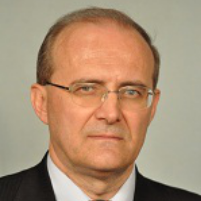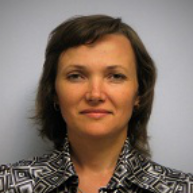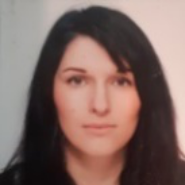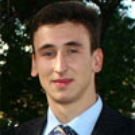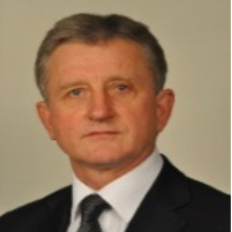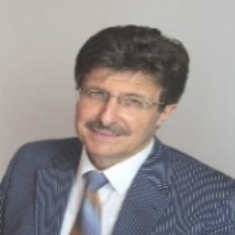International Journal of Intelligent Systems and Applications (IJISA)
IJISA Vol. 12, No. 1, 8 Feb. 2020
Cover page and Table of Contents: PDF (size: 544KB)
Computer Implementation of Algorithmic Components of Redundant Measurement Methods
Full Text (PDF, 544KB), PP.23-32
Views: 0 Downloads: 0
Author(s)
Index Terms
Computer simulation, redundant measurements, mathematical model, increasing accuracy, function instability, parameter prediction
Abstract
This article demonstrates the implementation of the proposed algorithm for computer modeling of redundant measurement methods to solve problems to improve the accuracy of measurements of a controlled quantity with a nonlinear and unstable transformation function. Improving accuracy is achieved by processing the results of redundant measurements which are an array of data according to the proposed measurement equations. In addition, the article presents the possibility of determining the time variation of the parameters of the transformation function. A comparative analysis of the results of computer simulation of redundant and direct methods with unstable parameters of the linear and nonlinear sensor transformation functions is carried out. It was proved that, in the case of an increase in deviations of the parameters of the transformation function from the nominal values, the use of redundant methods provides a significantly higher measurement accuracy compared to direct methods. This became possible due to the automatic elimination of the systematic component of the error of the measurement result due to a change in the parameters of the transformation function under the influence of destabilizing factors. It was also found that, in contrast to direct methods, methods of redundant measurements allow working with a nonlinear transformation function without additional linearization or dividing it into linear sections, which also contributes to increased accuracy.
In general, the application of the proposed approach in the modeling system proves its effectiveness and feasibility.
Thus, there is reason to argue about the prospects of redundant measurements in the field of improving accuracy with a nonlinear and unstable transformation function, as well as the possibility of identifying deviations of the parameters of the transformation function from their nominal values.
Cite This Paper
Vladimir Y. Shcherban’, Ganna A. Korogod, Oksana Z. Kolysko, Mariana I. Sholudko, Gennady V. Melnik, Vitaliy.V. Chaban, Yury Y. Shcherban’, "Computer Implementation of Algorithmic Components of Redundant Measurement Methods", International Journal of Intelligent Systems and Applications(IJISA), Vol.12, No.1, pp.23-32, 2020. DOI:10.5815/ijisa.2020.01.03
Reference
[1]R.I. Genkina, Yu.E. Lukashov, Kh.O. Malikova, V.A. Skovorodnikov and I.V. Osoka, “We speak VNIIMS, we mean - legal metrology !”, Legal and Applied Metrology, 2010, No. 5, pp. 8-15.
[2]V. Yu. Shcherban’, G. V. Melnyk, M. I. Sholudko and V. Yu. Kalashnyk, “Warp yarn tension during fabric formation”, Fibres and Textiles, 2018, Issue 2, pp. 97–104.
[3]V. Chaban “Influence of plastic deformation warp thread on basic physical and mechanical data warp-knitting fabrics”, Fibres and Textiles, 2013, Issue 1, pp. 9–13.
[4]V. Yu. Shcherban’, G. V. Melnyk, M. I. Sholudko, O. Z. Kolysko and V. Yu. Kalashnyk, “Yarn tension while knitting textile fabric”, Fibres and Textiles, 2018, Issue 3, pp. 74–83.
[5]M. Sengupta, “Accuracy of Photodiode Pyranometers for Photovoltaic Applications”, Fourth Conference on Weather, Climate, and the New Energy Economy, 2013. https://ams.confex.com/ams/93Annual/webprogram/Paper222639.html.
[6]I. O. Bragynets, O. G. Kononenko and Yu. О. Masjurenko, “Investigation high sensitive photo detector device based on the avalanche photodiode for optoelectronic measuring systems”, Tekhnichna elektrodynamika, 2016, 6, pp. 69–75. http://nbuv.gov.ua/UJRN/TED_2016_6_13.
[7]Wei Liu, Bing Liang, Zhenyuan Jia, Di Feng, Xintong Jiang, Xiao Li and Mengde Zhou, “High-Accuracy Calibration Based on Linearity Adjustment for Eddy Current Displacement Senso”, Sensors (Basel), 2018 Sep; 18(9): 2842. doi: 10.3390/s18092842
[8]Jiabin Wu, Yunshan Chen, Shijie Gao, Yimang Li and Zhiyong Wu, “Improved measurement accuracy of spot position on an InGaAs quadrant detector”, Applied Optics, Vol. 54, Issue 27, pp. 8049-8054 (2015). DOI:10.1364/AO.54.008049
[9]Mehdi Rahimi, Yudong Luo, Frederick C. Harris, and Yantao Shen, “Improving measurement accuracy of Position Sensitive Detector (PSD) for a new scanning PSD microscopy system”, IEEE International Conference on Robotics and Biomimetics (ROBIO 2014), Indonesia. DOI: 10.1109/ROBIO.2014.7090577
[10]A.V. Degtyarev, “Correction of the transformation function of the measuring channel using a radial basis neural network [Text]”, Collection of works of the VI International Scientific and Technical Conference "Metrology, information-measuring technologies and systems", Kharkiv, October 24-25, 2017, pp. 42–43.
[11]S.I. Klevtsov and E.V. Hoopoe, “ Management of error of measurements of physical quantity in a microprocessor sensor”, Izvestiya Southern Federal University. Engineering, 2015, pp.126-137.
[12]Klevtsov C.I. “Multisegment spatial approximation of the calibration characteristic of a microprocessor sensor”, Metrology. 2011. No. 7. pp. 26-36.
[13]V. Shcherban’, G. Korogod, V. Chaban, O. Kolysko, Yu.Shcherban’ and A.Shchutska, “Computer simulation methods of redundant measurements with the nonlinear transformation function”, Eastern-European Journal of Enterprise Technologies, 2019, Vol 2, No 5 (98), рp.16-22. DOI: 10.15587/1729-4061.2019.160830.
[14]V. T. Kondratov and A. A. Korogod, “Redundant pyrometry: state and development prospects”, Measuring and computing technology in technological processes, 2017, No. 2, pp. 37–46.
[15]V. T. Kondratov, “Novaya era razvitiya teorii metrologicheskoy nadezhnosti – funkciya raspredeleniya Kondratova – Veybulla, ee raznovidnosti, svoystva i funkcional’nye vozmozhnosti”, Zakonodatel’naya i prikladnaya metrologiya, 2009. Issue 2. pp. 21–22.
[16]V.T. Kondratov, “Definitions and basic classification of measuring systems”, Vimіryuvalnaya and obucyuslyuvalnaya technology in technological processes. 2014, No. 3, pp. 85-100.
